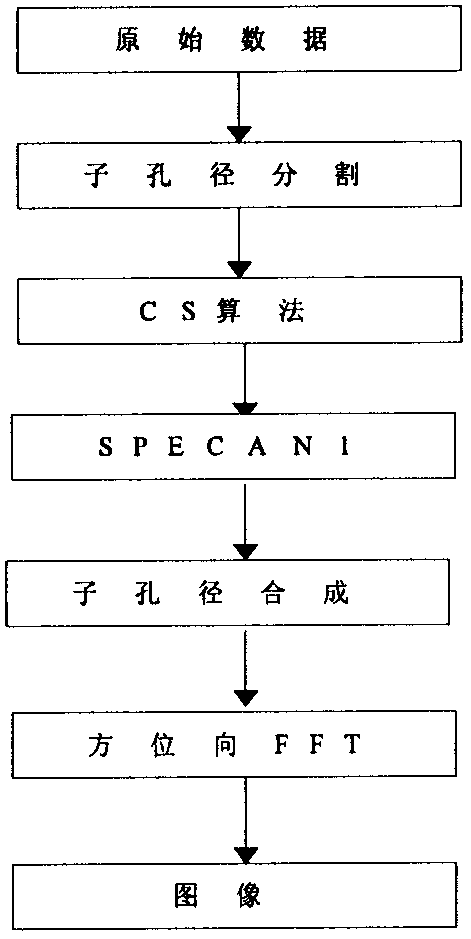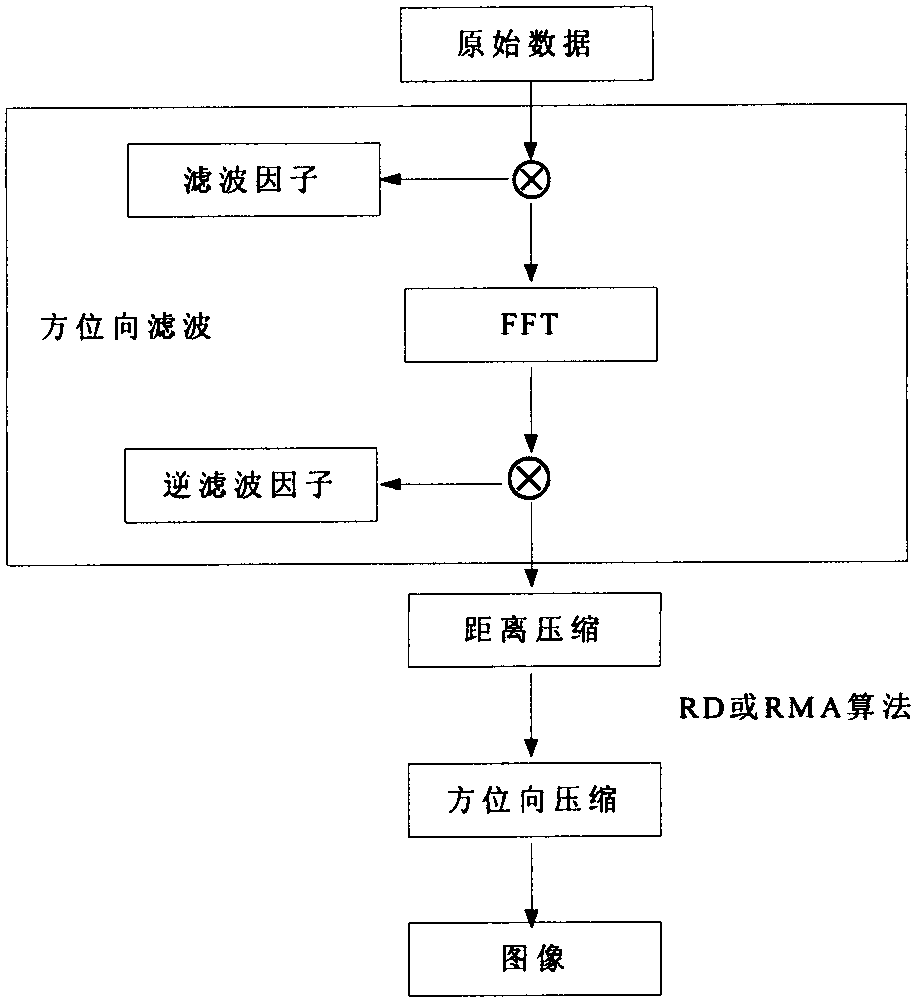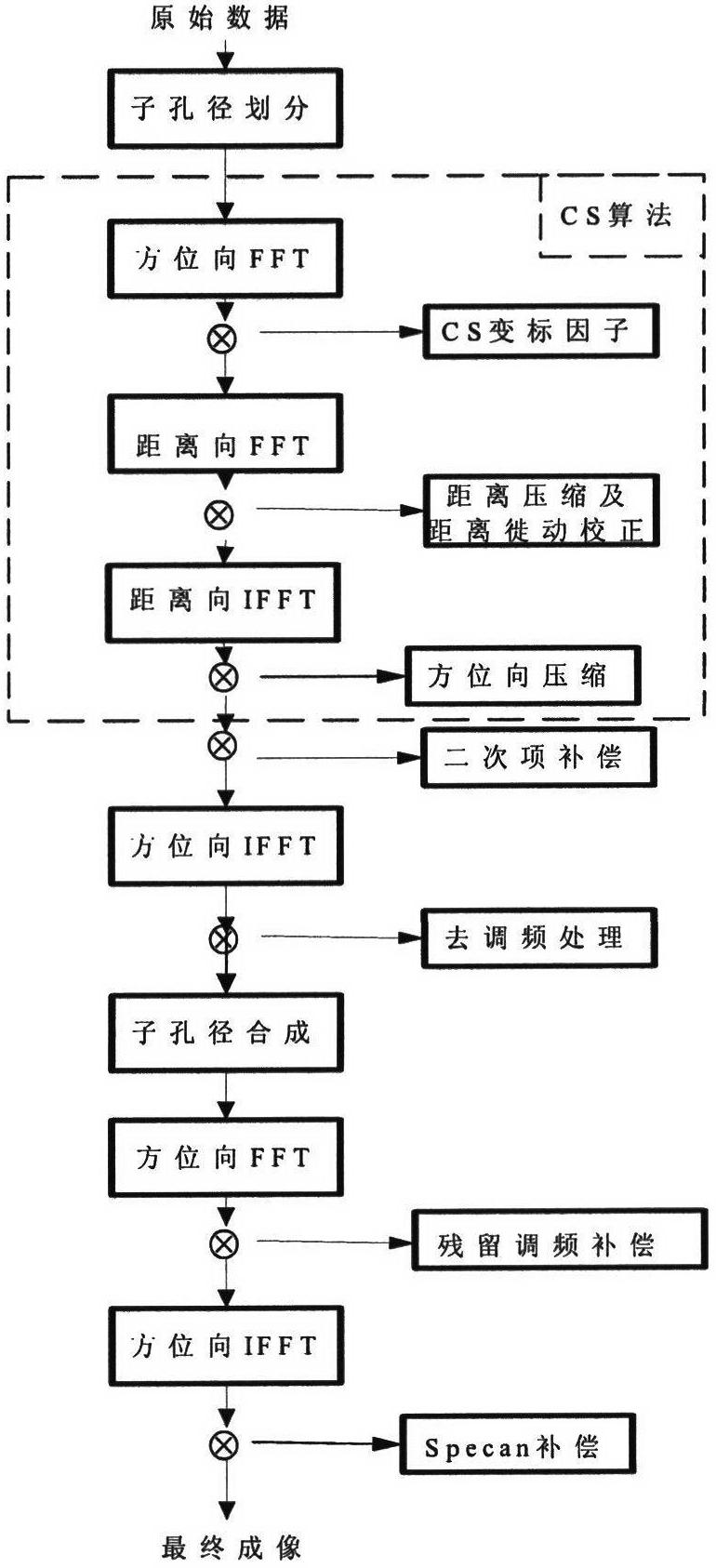Signal processing method of satellite-bone sliding spotlight synthetic aperture radar
A synthetic aperture radar and sliding beamforming technology, which is applied in the reflection/re-radiation of radio waves, the use of re-radiation, measurement devices, etc., which can solve the problem that the spatial variability of the scene cannot be ignored, the image quality is affected, and the signal-to-noise ratio loss is lost.
- Summary
- Abstract
- Description
- Claims
- Application Information
AI Technical Summary
Problems solved by technology
Method used
Image
Examples
Embodiment Construction
[0032] The present invention will be further introduced below in conjunction with the accompanying drawings. Such as image 3 Shown, processing method of the present invention comprises the steps:
[0033] (1) Sub-aperture division
[0034] First, the original sliding spotlight SAR data should be divided into sub-apertures, and the length of the sub-aperture should be greater than the instantaneous bandwidth of the sliding spotlight SAR target point. according to the formula Determine the number of sub-aperture divisions, PRF is the pulse repetition frequency, B a is the instantaneous bandwidth of the signal, k rot is the FM slope from the satellite to the center of rotation. By dividing the sub-aperture, the azimuth ambiguity of the sliding beamforming synthetic aperture radar is effectively removed, and the repetition frequency of the system is reduced, which can make the selection of the pulse repetition frequency of the system consistent with the selection in the str...
PUM
 Login to View More
Login to View More Abstract
Description
Claims
Application Information
 Login to View More
Login to View More - Generate Ideas
- Intellectual Property
- Life Sciences
- Materials
- Tech Scout
- Unparalleled Data Quality
- Higher Quality Content
- 60% Fewer Hallucinations
Browse by: Latest US Patents, China's latest patents, Technical Efficacy Thesaurus, Application Domain, Technology Topic, Popular Technical Reports.
© 2025 PatSnap. All rights reserved.Legal|Privacy policy|Modern Slavery Act Transparency Statement|Sitemap|About US| Contact US: help@patsnap.com



